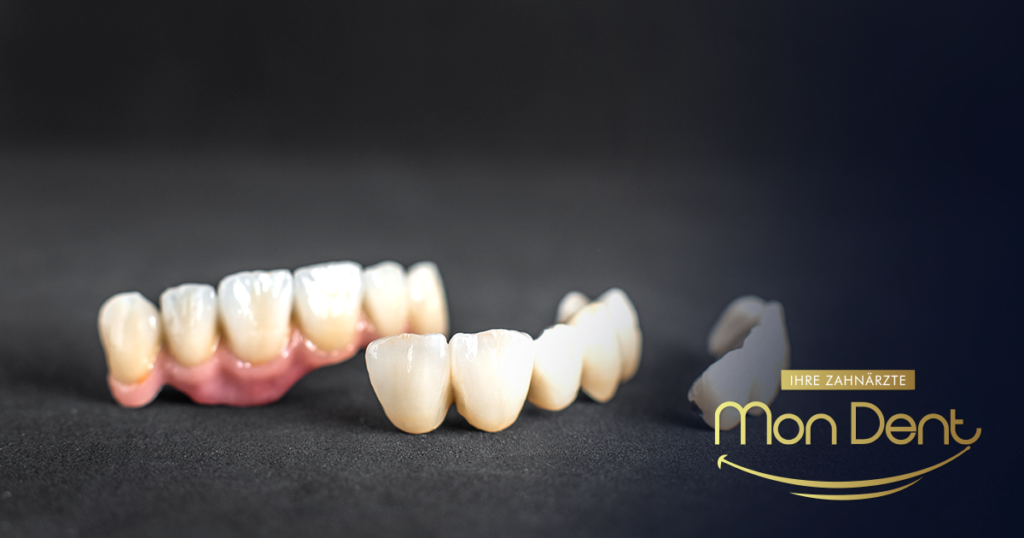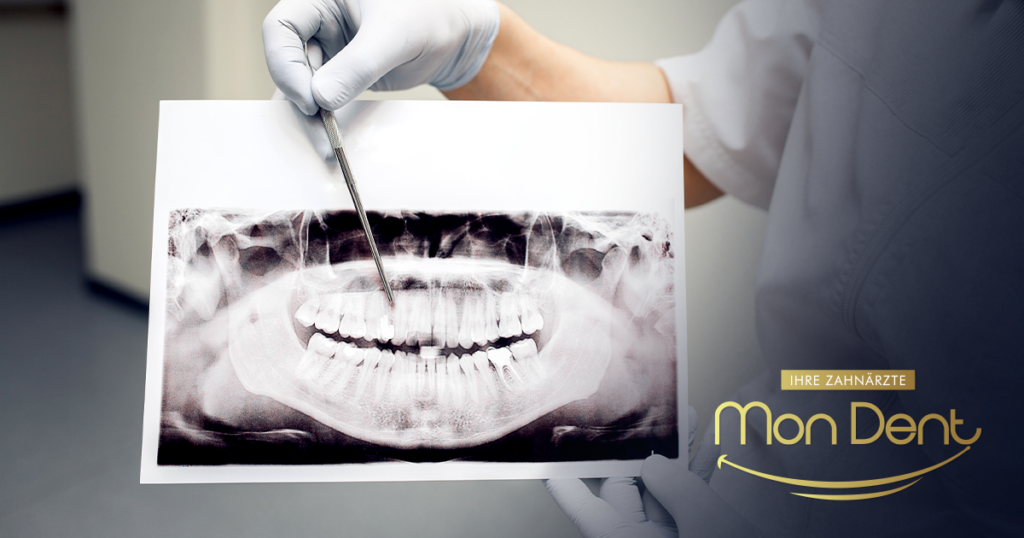Content:
- What is a dental bridge and how does it work?
- When is a dental bridge the ideal choice for you?
- When might a dental bridge not be the best solution?
- The process of installing a dental bridge at MonDent dental practicei
- The longevity of your dental bridge
- Frequently asked questions
- Conclusion
Missing teeth can significantly affect your smile, chewing ability, and overall self-confidence. Fortunately, modern dentistry offers a variety of solutions for replacing lost teeth, and one of the most common and effective is dental bridgeBut a dental bridge is not a universal solution and it is important to understand when it is the ideal choice for you and when it is better to consider other options.
IN MonDent office in Banja Luka, we are committed to making you feel comfortable and safe throughout the entire process. Our team of experts, with the help of free 2D/3D X-rays, will help you make the best decision for your smile.
This guide will explain what a dental bridge is and whether this procedure for replacing lost teeth will solve your current problem.
What is a dental bridge and how does it work?
The dental bridge is fixed prosthetic restoration which is used to fill the gap caused by the loss of one or more teeth. It consists of three main parts: crown (cover) which are fixed to adjacent teeth or implants (which serve as supports), and bridge body (pontic) which replaces the lost tooth. Once placed, the bridge permanently cements, restoring full chewing function and the aesthetics of your smile.
Materials for making dental bridges
The choice of material is crucial to the aesthetics, function and longevity of your bridge. At MonDent, we use the most modern materials to ensure superior results. Metal-ceramic bridges are a traditional and proven option. Consisting of a solid metal base coated with layers of ceramic, they are affordable, extremely durable, and suitable for all positions in the jaw.
If you are looking for superior aesthetics, zirconia ceramic bridges are an ideal choice. These bridges are metal-free and made of zirconium oxide, a material of exceptional strength and translucency that provides a natural appearance. E-max bridges, made of lithium disilicate, are known for their high aesthetics and natural color, and are excellent for smaller bridges, especially in the anterior region where aesthetics are primary.
When is a dental bridge the ideal choice for you?
A dental bridge can be an excellent solution in specific situations, especially when it comes to replacement of individual teeth or small gapsIt is ideal for replacing one, two or even three missing teeth that are next to each other. The key is to have healthy adjacent teeth which will serve as supports; if these teeth are already damaged or have large fillings, grinding for crowns may be less invasive.
The bridge is often faster solution compared to implant placement, which is attractive to patients who want a faster smile restoration. It is also suitable for those who avoid surgery, because the placement of a bridge does not involve surgical interventions in the jawbone. Finally, a dental bridge is an excellent option when a patient, for various reasons, not a good candidate for dental implants, such as insufficient bone mass or certain medical conditions.

The main advantages of a dental bridge
In addition to filling the gap, a dental bridge brings numerous benefits. First of all, it restores full functionality, allowing you to enjoy chewing food and speaking clearly again. Then, it provides exceptional aesthetics, filling in the gaps in your smile and restoring its natural and attractive appearance.
Since it is a fixed solution, it ensures stability and durability, which means you don't have to worry about removing or moving it. Finally, the bridge plays a key role in preventing tooth movementBy filling the gap, migration of adjacent teeth is prevented and opposing teeth are prevented from growing in, thus preserving the integrity of the entire dental arch.
When might a dental bridge not be the best solution?
While a dental bridge is a great option, there are situations where it may not be the most suitable solution and when alternatives should be considered. One of the key factors is lack of strong supports, because the adjacent teeth must be healthy and strong enough to withstand the additional load of the bridge.
A significant drawback is also grinding healthy teeth; to place a bridge, adjacent, sometimes completely healthy teeth must be ground down in order to place crowns on them, which many patients want to avoid.
For a large number of missing teeth, i.e. for bridges that are too long, there is a risk of overloading and potential breakage. It is also important to know that a bridge does not stimulate the jawbone like an implant, which can lead to gradual bone resorption under the bridge. Finally, hygiene challenges may be present, as maintaining cleanliness under the bridge requires special techniques and tools, such as interdental brushes and dental floss.
Alternative solutions for tooth replacement
Depending on your individual situation and wishes, MonDent may offer you other options. Dental implants are considered the gold standard for replacing missing teeth. They replace the root of a tooth by being implanted directly into the jawbone, which avoids grinding down neighboring teeth and stimulates bone preservation. You can learn more about dental implants on our page about dental implantsFor situations where fixed solutions are not possible, there are partial dentures, a mobile solution used for multiple missing teeth or specific contraindications.
The process of installing a dental bridge at MonDent practice
At MonDent, your comfort and understanding of the process are our priority. We approach each patient individually, ensuring you feel safe and informed every step of the way:
- Consultations and detailed diagnostics: The first step is always a thorough examination. Our dentists will carefully assess the condition of your teeth and jaw. Thanks to 2D/3D X-rays With minimal radiation, we gain precise insight into the bone structure and the condition of neighboring teeth. Based on this, together with you, we plan the most appropriate therapy.
- Tooth preparation: If you opt for a bridge, the adjacent teeth that will serve as supports must be carefully prepared – they are lightly ground down to make room for the bridge crowns.
- Taking a print: After grinding, a precise impression of your jaw is taken. This impression is sent to a dental laboratory where, using the latest technology, your personalized dental bridge is created.
- Temporary bridge: While we wait for the permanent bridge to be made, a temporary bridge is placed. It protects the prepared teeth from sensitivity, allows for normal chewing, and maintains the aesthetics of your smile.
- Trial phase: When the permanent bridge is ready, we invite you to a fitting. During this phase, we check the precision of the workmanship, your bite, and aesthetics. It is important to us that the bridge fits perfectly and that you are completely satisfied with its appearance.
- Permanent cementation: After you and our team have confirmed that everything is perfect, the bridge is permanently cemented onto the prepared teeth.

Maintenance and longevity of your dental bridge
Proper care is crucial to the longevity of your dental bridge and overall oral health. At MonDent, we will provide you with detailed instructions on how to care for your new smile.
Proper oral hygiene This includes brushing your teeth regularly with a soft toothbrush and using dental floss and interdental brushes to clean the spaces under your bridge. Oral irrigators may also be helpful.
To that, regular dental check-ups at MonDent practice every 6 months are necessary for a check-up of the bridge and general oral health. It is also important avoid excessive pressure on the bridge, such as biting hard objects, to prevent damage. With this kind of care, your dental bridge can last 10-15 years, even longer, giving you a functional and aesthetically appealing smile.
Frequently Asked Questions (FAQ)
- What is a dental bridge?
A dental bridge is a fixed prosthetic restoration that fills the gap caused by the loss of one or more teeth, consisting of crowns on adjacent supporting teeth and a part that replaces the lost tooth.
- Is it painful to have a dental bridge installed?
The placement of a dental bridge is performed under local anesthesia, so the procedure is painless. After the procedure, you may feel mild discomfort that is easily controlled with analgesics.
- How long does a dental bridge last?
With proper oral hygiene and regular dental checkups, a dental bridge can last between 10 and 15 years, and often longer.
- What is the difference between a dental bridge and an implant?
The main difference is that dental implant It replaces the tooth root and does not require grinding of adjacent teeth, while a dental bridge requires grinding of adjacent teeth that serve as supports.
Conclusion
A dental bridge is a proven effective and aesthetic solution for replacing missing teeth, which significantly improves quality of life. However, its suitability always depends on the individual situation and needs of each patient.
IN MonDent office, your smile is our priority. Through detailed diagnostics, including 2D/3D X-rays with minimal radiation, and our individual, empathetic approach, we will help you make the best decision for your smile. Our goal is for you to feel completely comfortable and safe in our office.
Schedule your appointment. today and find out if a dental bridge is the right solution for you! Visit us in Banja Luka at Milana Radmana 47 or contact us by phone at 066 153 582.





